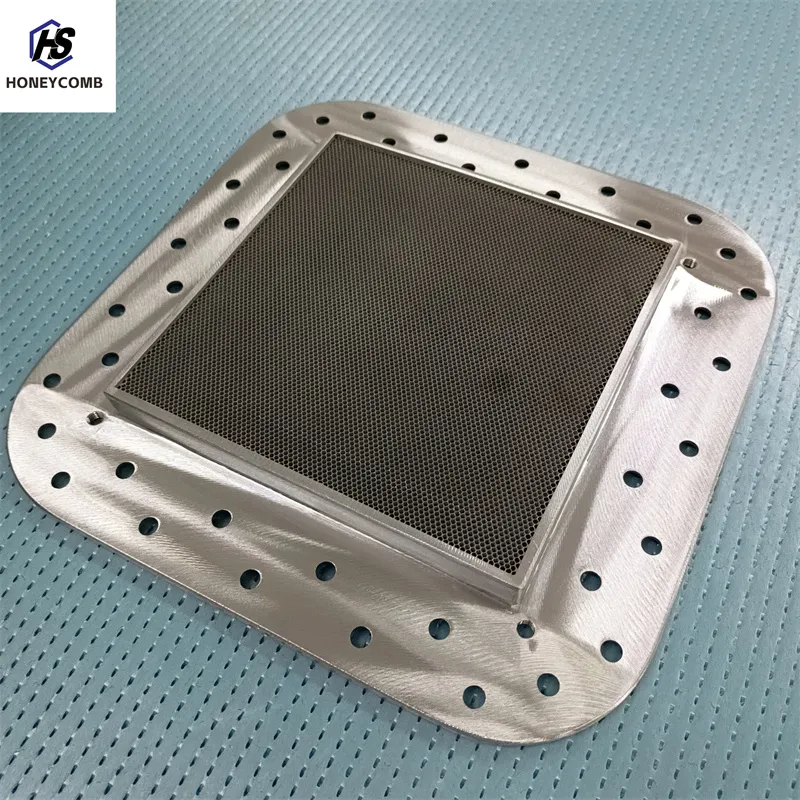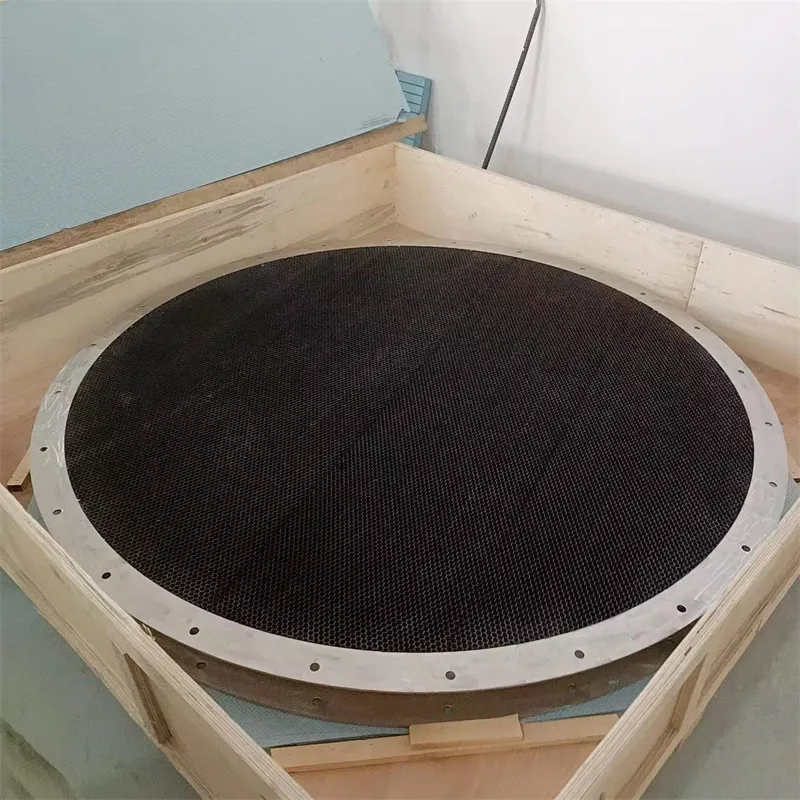
- Afrikaans
- Albanian
- Amharic
- Arabic
- Armenian
- Azerbaijani
- Basque
- Belarusian
- Bengali
- Bosnian
- Bulgarian
- Catalan
- Cebuano
- China
- China (Taiwan)
- Corsican
- Croatian
- Czech
- Danish
- Dutch
- English
- Esperanto
- Estonian
- Finnish
- French
- Frisian
- Galician
- Georgian
- German
- Greek
- Gujarati
- Haitian Creole
- hausa
- hawaiian
- Hebrew
- Hindi
- Miao
- Indonesian
- Italian
- Japanese
- Javanese
- Malay
- Persian
- Portuguese
- Punjabi
- Russian
- Spanish
- Swahili
- Telugu
- Vietnamese

Custom Aerospace Honeycomb Specs – Precision Engineering & Superior Quality Solutions
- Introduction to custom aerospace honeycomb specs
and market demands - Material innovations driving advancements
- Performance advantages and technical data
- Comparison of leading custom aerospace honeycomb manufacturers
- Customized engineering: Solutions and manufacturing processes
- Real-world application cases and industry adoption
- Conclusion: The future of custom aerospace honeycomb specs in aerospace

(custom aerospace honeycomb specs)
Introduction: Understanding Custom Aerospace Honeycomb Specs
The aerospace industry increasingly relies on advanced honeycomb structures, engineered to provide optimal strength-to-weight ratios critical to modern flight. Custom aerospace honeycomb specs define not just material properties, but also the geometry, cell size, and tailored attributes specific to high-performance flight components. Recent studies show the global market for aerospace honeycomb materials exceeded $1.3 billion in 2023, with a projected CAGR of 7.2% through 2030. This surge underscores both the complexity of aerospace requirements and the need for suppliers to meet highly specialized demands. Flight manufacturers and OEMs seek materials that deliver reliable compressive strength, superior fatigue resistance, and design adaptability for everything from aircraft interiors to structural panels. As such, understanding the nuances of honeycomb specs—cell size, core thickness, density, and material process—is mission-critical to decision-makers seeking engineering excellence and compliance with aviation standards.
Material Innovation: Pushing Honeycomb Technology Boundaries
Material innovation remains at the heart of aerospace honeycomb evolution. Traditional aluminum honeycomb, prized for its lightweight and corrosion resistance, now seamlessly integrates with advanced composites such as aramid (Nomex®) and thermoplastic cores. These materials offer distinct advantages: aramid honeycomb exhibits up to 40% greater impact resistance than comparable metallic cores, while thermoplastic cores provide unmatched durability under extreme temperature cycles typically found in supersonic flight. Recent innovations also include hybrid honeycomb structures, employing both metal and composite materials, thus enabling engineers to meticulously control zone-wise properties for tailored performance. Sustainable sourcing and advances in resin impregnation technology have led to a 30% reduction in voids and defects, improving both quality assurance and in-flight safety. As aerospace missions demand ever thinner yet resilient panels—sometimes as low as 0.8mm core thickness—custom honeycomb suppliers are leveraging these material breakthroughs to meet rigorous design specifications.
Technical Advantages: Performance Metrics and Key Datasheet Insights
Beyond material choice, technical performance is quantified through comprehensive datasheets that define strength-to-weight ratios, thermal conductivity, environmental resistance, and compressive modulus. When comparing custom aerospace honeycomb datasheets, leading products consistently achieve compressive strengths exceeding 2.8 MPa and shear strengths beyond 1.9 MPa, meeting or surpassing aerospace standards such as ASTM C365. Thermally, advanced honeycomb cores with carbon composite skins demonstrate conductivity as low as 0.035 W/mK, essential for applications sensitive to heat transfer such as satellite panels. Environmental resilience is evidenced by salt-fog and humidity cycle testing, in which state-of-the-art honeycomb cores display zero delamination and less than 1% dimensional change after 2,000 hours of exposure. Datasheets also highlight process control: dimensional tolerances to ±0.08 mm and weight variations under 2%, which significantly reduce the risk of assembly defects in high-stress aerospace environments. The maturation of custom honeycomb technology ensures not just compliance but breakthrough performance, directly translating to reduced airframe weight and enhanced operational margins.
Manufacturer Comparison: Market Leaders and Specification Diversity
Choosing a custom aerospace honeycomb manufacturer involves rigorous evaluation of both capability and performance. The following table presents a comparative overview of leading global suppliers, focusing on product range, core materials, customization options, and compliance certifications (all data based on latest industry reports):
| Manufacturer | Honeycomb Core Materials | Customization Features | Certifications | Typical Lead Time |
|---|---|---|---|---|
| Hexcel Corporation | Aluminum, Nomex®, Kevlar®, Thermoplastic | Cell size, thickness, density, fire resistance | AS9100, ISO 9001, FAA | 6-8 weeks |
| Euro-Composites | Aramid fiber, Aluminum, Polypropylene | Custom geometry, integrated skins, high-temp | EN9100, NADCAP | 8-10 weeks |
| Plascore Inc. | Aluminum, Thermoplastic, Stainless Steel | Precision CNC cutting, bespoke shapes | AS9100, ISO 9001 | 5-7 weeks |
| Cellbond | Aluminum, Kevlar®, Glass Fiber | Multi-zone core, fire/smoke/toxicity | ISO 9001, FAA | 7-9 weeks |
When selecting a manufacturer, important criteria include not just materials and specifications, but also the scope of customization, lead times, quality traceability, and after-sales engineering support. Suppliers that invest in agile lines and digital quality tracking now enable order-to-delivery cycles nearly 20% faster than industry average, giving aerospace clients a critical edge in new platform development.
Custom Engineering Solutions: From Concept to Production
The true potential of custom aerospace honeycomb construction lies in specialized engineering services that translate concept into production-ready components. Modern manufacturers utilize advanced CAD/CAM systems, rapid prototyping, and tightly controlled batch manufacturing to adapt designs for new aerospace programs. Bespoke process options include waterjet and laser cutting for complex 3D core shapes, thermosetting resins for improved high-temperature behavior, and hybrid reinforcement tacking for multi-zone assemblies. A typical custom solution pathway involves finite element analysis (FEA) during the design phase, incorporating iterative feedback from initial test batches to ensure performance alignment with OEM requirements. On the production floor, digital twin technology and real-time non-destructive testing (NDT) enable continuous monitoring of product integrity, reducing failure rates by over 25% compared to traditional methods. Process traceability has become a key quality differentiator: serialized batch histories, material certifications, and lifetime digital records help streamline certification for new aircraft models. Engineering flexibility thus unlocks application-specific outcomes, such as ultra-thin panels for UAVs or high-impact-resistant cores for manned space modules.
Application Cases: Real-world Impact in Aerospace Programs
The efficacy of custom honeycomb cores is best illustrated through their successful deployment across world-class aerospace programs. In the commercial aviation sector, the introduction of next-gen Nomex® honeycomb panels in the Boeing 787 led to a 18% reduction in interior weight, directly contributing to a 6% increase in fuel economy per flight. Spacecraft integration, such as in the ESA’s Solar Orbiter, relies on tailored carbon-honeycomb composites to maintain core temperature within ±2°C of the operational setpoint—ensuring instrumentation survives both deep space cold and solar proximity. Regional jet manufacturers like Embraer have adopted hybrid aluminum-aramid honeycomb structures, achieving a 22% boost in panel buckling resistance, which translates to increased passenger safety and extended maintenance intervals. In UAV design, carbon-honeycomb sandwich panels now enable payload increases of up to 40% while keeping total vehicle mass under stringent regulatory limits. These cases collectively spotlight the transformative influence of custom honeycomb cores—enabling new heights in efficiency, resilience, and adaptability across the aerospace spectrum.
The Future of Custom Aerospace Honeycomb Specs
As the aerospace sector anticipates the next era of flight innovation, custom aerospace honeycomb specs stand poised to redefine possibilities. The convergence of advanced composites, digital manufacturing, and stringent certification workflows empowers OEMs to demand cores perfected for speed, safety, and sustainability. By collaborating closely with leading manufacturers, engineering teams can unlock solutions calibrated not only for current aircraft but for unmanned systems, urban mobility, and even hypersonic travel. Continued investment in materials research, zero-waste production lines, and data-driven performance monitoring ensures that the role of the honeycomb core will only grow more vital. Investing in custom specifications today translates to tomorrow’s competitive advantage—lighter, stronger, and more intelligent airframes serving an ever-expanding sky.

(custom aerospace honeycomb specs)
FAQS on custom aerospace honeycomb specs
Q: What are custom aerospace honeycomb specs?
A: Custom aerospace honeycomb specs refer to specifically tailored material, cell size, thickness, and strength requirements for honeycomb structures used in aerospace applications. These specifications ensure optimal performance based on unique customer requirements. They can be provided by manufacturers upon request.Q: How do I find a reliable custom aerospace honeycomb manufacturer?
A: Search for manufacturers with proven experience in aerospace honeycomb production, relevant certifications, and a history of custom solutions. Reviewing customer testimonials and case studies can also help. Contact the manufacturer directly to discuss your specific project needs.Q: Where can I access a custom aerospace honeycomb datasheet?
A: Custom aerospace honeycomb datasheets are typically available from the manufacturer upon request. These datasheets detail the product's technical properties, including mechanical performance and material composition. Always verify the datasheet aligns with your project’s precise requirements.Q: Can I request specific cell size or material for my custom aerospace honeycomb?
A: Yes, reputable custom aerospace honeycomb manufacturers can produce honeycombs with your desired cell size, thickness, density, and materials. Communicate your detailed specifications during the quote or design phase. This ensures the final product matches your application’s needs.Q: Why are custom aerospace honeycomb specs important in aircraft manufacturing?
A: Custom specs ensure each honeycomb structure is optimized for weight, strength, and environmental resistance needed for aircraft. They contribute to safety, efficiency, and longevity of aerospace components. Tailored solutions often result in significant performance improvements.Products categories
-
Why Vented Aluminum Honeycomb Is Leading the Way in Shielding and Ventilation SolutionsNewsJul.18,2025
-
Why Stainless Steel Honeycomb Panel is the Ultimate Choice for High-Tech Shielding and ProtectionNewsJul.18,2025
-
Why Honeycomb Strips Are Revolutionizing High-Speed Sealing SolutionsNewsJul.18,2025
-
Shielded Glass Innovation Powers the Future of Electromagnetic ProtectionNewsJul.18,2025
-
Precision Starts Here: Revolutionizing Airflow Control with Honeycomb Wind Tunnel SolutionsNewsJul.18,2025
-
Elevate Industrial Performance with Precision-Engineered Steel Honeycomb Core SolutionsNewsJul.18,2025
-
Vented Aluminum Honeycomb: A Smart Shield for Airflow and EMI ControlNewsJul.11,2025















